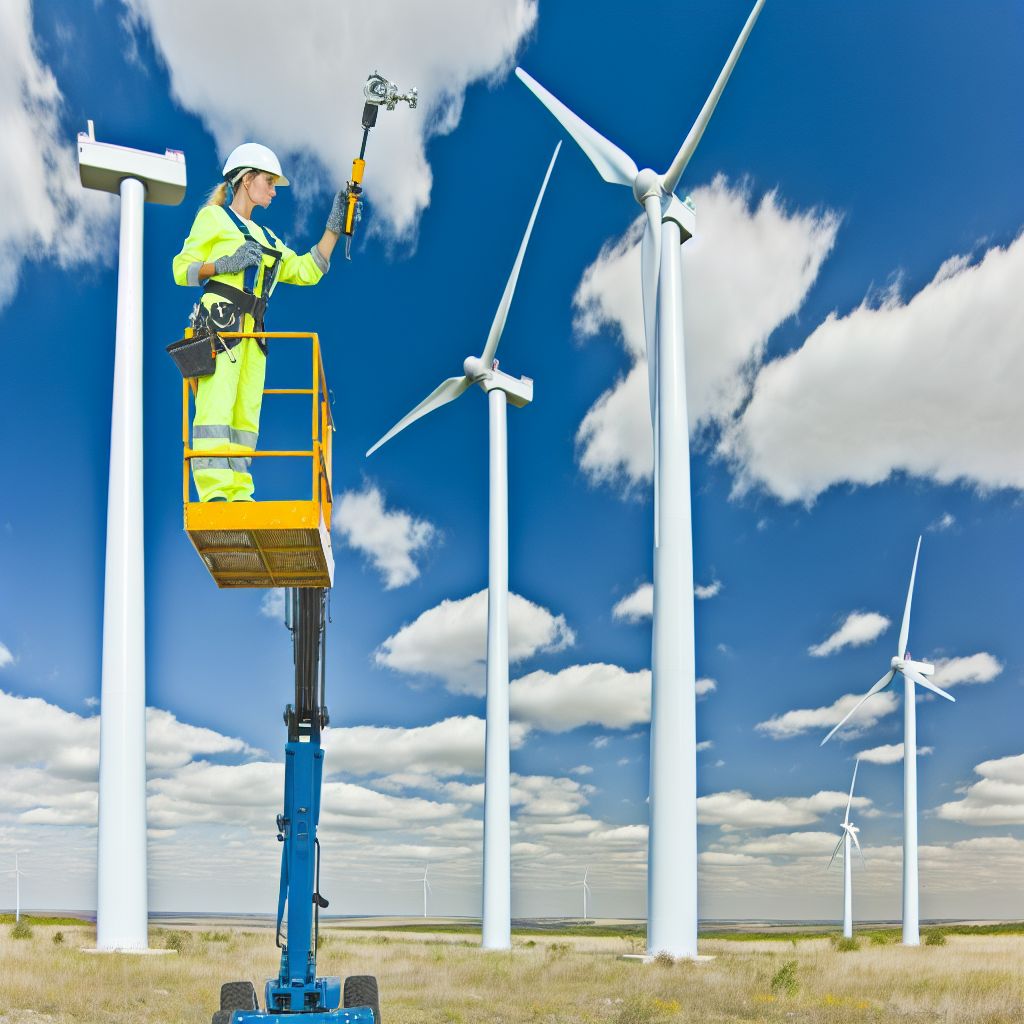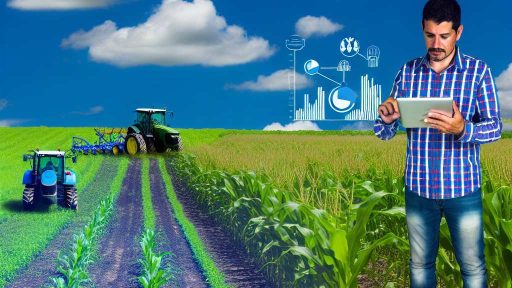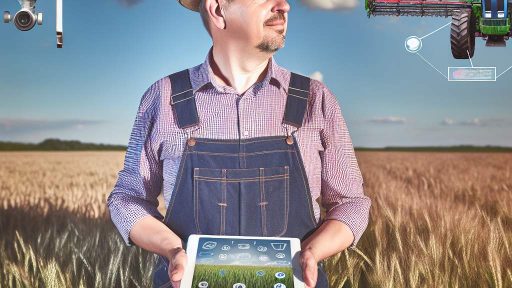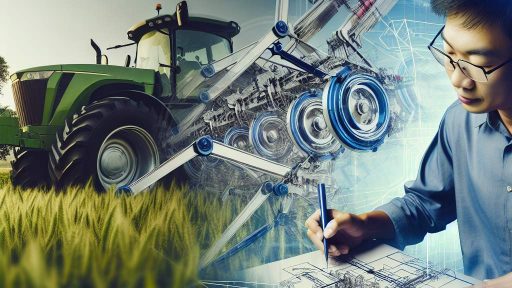Introduction to Wind Turbines: Benefits for Farms
Wind turbines offer numerous advantages for farms looking to enhance sustainability.
First, they provide a renewable energy source that significantly reduces reliance on fossil fuels.
By harnessing wind energy, farmers can lower their energy costs and increase their bottom line.
Cost savings are particularly notable in remote areas where traditional power sources can be expensive.
Additionally, wind turbines can contribute to energy independence for agricultural operations.
Environmental Benefits
Installing wind turbines helps mitigate climate change effects by reducing greenhouse gas emissions.
Furthermore, they promote sustainable land use practices that can improve soil quality over time.
Moreover, wind energy production involves fewer water resources compared to conventional power generation.
Economic Advantages
Wind turbines can generate income through energy sales and grid benefits for local communities.
This diversification of income streams can protect farmers from market volatility.
Furthermore, government incentives for renewable energy installations can subsidize setup costs.
Improving Farm Resilience
Wind turbines can enhance the overall resilience of farming operations against external challenges.
They provide a reliable energy source during power outages and adverse weather events.
By integrating wind energy, farmers can maintain critical operations such as irrigation systems.
Site Selection: Factors Influencing Wind Turbine Placement
Wind Resource Assessment
Begin by evaluating the wind resource at your site.
Transform Your Agribusiness
Unlock your farm's potential with expert advice tailored to your needs. Get actionable steps that drive real results.
Get StartedUtilize wind mapping tools for preliminary data.
Consider conducting on-site wind measurements.
Gather data over several months for accuracy.
Topography
Assess the land’s topography before installation.
Identify any obstructions such as hills or buildings.
Higher elevations can enhance wind exposure.
Flat areas generally provide better turbine placement.
Proximity to Existing Infrastructure
Evaluate the distance from power lines and substations.
Closer proximity reduces operational costs.
Consider access roads for maintenance and logistics.
Ensure pathways to the site are well-established.
Environmental Considerations
Examine local wildlife and habitats before placement.
Avoid areas with protected species or habitats.
Consult local environmental regulations and guidelines.
Conduct an environmental impact assessment as needed.
Land Use and Zoning Regulations
Understand the zoning laws relevant to turbine installation.
Check for any restrictions on agricultural land use.
Engage with local authorities for permits and approvals.
Ensure compliance with all legal requirements prior to installation.
Community Acceptance
Gauge community sentiment towards wind energy projects.
Engage local stakeholders through meetings and discussions.
Address concerns regarding noise and visual impacts.
Promote the benefits of wind energy for the community.
Permitting and Regulations: Navigating Legal Requirements
Understanding Permitting Basics
Permitting is essential before installing wind turbines on farms.
Showcase Your Farming Business
Publish your professional farming services profile on our blog for a one-time fee of $200 and reach a dedicated audience of farmers and agribusiness owners.
Publish Your ProfileThis process ensures compliance with local laws and regulations.
Farmers must gather necessary documentation prior to installation.
Additionally, they should consult relevant agencies early in the project.
Local, State, and Federal Regulations
Each level of government may impose different regulations.
Local regulations often dictate turbine placement and height.
State regulations may require additional environmental assessments.
Moreover, federal guidelines can affect larger projects significantly.
Environmental Impact Assessments
Conducting an environmental impact assessment is often required.
This assessment evaluates the project’s potential effects on local ecosystems.
Farmers should collaborate with environmental experts during this stage.
Furthermore, they need to address any concerns that arise from the assessment.
Communication with Authorities
Open communication with local authorities can streamline the permitting process.
Farmers should schedule meetings to discuss their projects proactively.
Additionally, addressing community concerns can prevent future issues.
Building relationships with officials fosters cooperation and support.
Submitting Applications
After preparing the necessary documents, farmers must submit their applications.
Timely submissions can expedite the review process.
Keeping copies of all submitted materials is crucial for reference.
Furthermore, monitor the application status regularly to ensure progress.
Staying Informed about Changes
Regulations can change, impacting wind turbine installation procedures.
Farmers should stay informed about evolving legal requirements.
Joining industry associations can provide valuable updates.
Moreover, participating in workshops enhances knowledge on regulatory matters.
Delve into the Subject: How Agri-Fintech Solutions Are Revolutionizing Modern Farming Practices
Wind Resource Assessment
Introduction to Wind Resource Assessment
Wind resource assessment is essential for successful wind turbine installation.
This process involves evaluating the wind potential of specific locations.
Farmers need accurate data to make informed decisions.
Tools for Wind Resource Assessment
Various tools exist to measure wind resources effectively.
- Anemometers provide real-time wind speed data.
- Wind vanes measure wind direction accurately.
- Data loggers store measurements for analysis.
Additionally, remote sensing technologies offer significant advantages.
LIDAR and SODAR systems assess wind profiles at different heights.
Techniques for Accurate Measurements
Implementing best practices is crucial for reliable wind data collection.
First, select representative locations for measurement devices.
Next, ensure proper calibration of all instruments.
Regular maintenance helps maintain data integrity.
Using multiple measurement points enhances accuracy.
Evaluating Data and Making Decisions
After collecting data, analyze wind patterns over time.
Statistical tools aid in understanding seasonal variations.
- Logarithmic regression can model wind speeds effectively.
- Evaluate wind shear to understand vertical wind variability.
This analysis enables farmers to estimate energy potential accurately.
Finally, make informed decisions regarding turbine placement.
Gain More Insights: How Biotechnology Is Transforming Modern Farming Practices
Showcase Your Farming Business
Publish your professional farming services profile on our blog for a one-time fee of $200 and reach a dedicated audience of farmers and agribusiness owners.
Publish Your ProfileTurbine Selection: Choosing the Right Model for Agricultural Needs
Assessing Energy Requirements
Begin by assessing your energy needs accurately.
Calculate the average energy consumption for your farm.
Consider seasonal fluctuations in energy usage.
This evaluation helps in selecting an appropriate turbine model.
Understanding Site Characteristics
Evaluate the site characteristics before installation.
Wind speed and direction play crucial roles.
Identify any potential obstacles, such as trees or buildings.
Conduct a site assessment to gather reliable data.
Choosing the Right Turbine Type
Select a turbine model suitable for your farm’s environment.
Consider both horizontal and vertical axis wind turbines.
Horizontal axis turbines are more common and efficient.
However, vertical axis turbines may suit smaller spaces better.
Evaluating Turbine Specifications
Examine the specifications of different turbine models.
Look at the rated power output and efficiency ratings.
Assess the cut-in wind speed and operational limits.
This information ensures you choose a reliable turbine.
Budget Considerations
Establish a budget that covers the initial and ongoing costs.
Account for installation, maintenance, and potential subsidies.
Compare financing options available for renewable energy projects.
A clear budget helps avoid future financial strains.
Consulting with Experts
Seek advice from professionals in wind energy.
Consult engineers and experienced installers for insights.
They can guide you in making informed decisions.
Leverage their experience to avoid common pitfalls.
Conducting a Feasibility Study
Before finalizing your choice, conduct a feasibility study.
This study assesses the practicality of your turbine selection.
Evaluate factors like local regulations and environmental impact.
Ensure your choice aligns with your farm’s goals and sustainability practices.
Learn More: Solar Power Systems for Modern Agricultural Operations
Installation Procedures
Planning Phase
Begin with thorough site assessment before installation.
Evaluate wind resources to confirm viability for turbines.
Engage stakeholders to discuss project goals and expectations.
Establish a timeline to keep the project on track.
Obtain necessary permits and approvals from local authorities.
Site Preparation
Clear the designated area of any obstacles such as trees and debris.
Create access roads for equipment and personnel.
Prepare a stable foundation for each turbine to ensure safety.
Coordinate with environmental specialists to mitigate impact.
Equipment Delivery
Schedule delivery of turbine components well in advance.
Inspect all equipment upon arrival for any damage or defects.
Showcase Your Farming Business
Publish your professional farming services profile on our blog for a one-time fee of $200 and reach a dedicated audience of farmers and agribusiness owners.
Publish Your ProfileOrganize storage areas to protect parts from weather-related damage.
Ensure all crane and lifting equipment is properly set up.
Installation Process
Begin by assembling the tower sections on the ground.
Utilize cranes to lift tower sections into position.
Securely attach the turbine nacelle to the top of the tower.
Install the rotor blades carefully to avoid damage.
Connect the electrical systems according to manufacturer specifications.
Post-Installation Checks
Conduct thorough inspections to ensure proper installation.
Test all systems including electrical and mechanical components.
Address any issues identified during inspections immediately.
Provide training for staff on turbine operation and maintenance.
Monitoring and Maintenance
Establish a monitoring system to track turbine performance.
Schedule regular maintenance to ensure operational efficiency.
Document all maintenance activities for future reference.
Keep open communication with manufacturers for support.
Uncover the Details: Choosing The Right Crop Disease Detection Tools For Your Farming Needs

Maintenance Best Practices: Ensuring Longevity and Performance
Regular Inspections
Conduct regular inspections of the wind turbines.
This helps identify potential issues early on.
Inspect critical components like blades and gearboxes.
Utilize drones for hard-to-reach areas.
Document all findings for future reference.
Scheduled Maintenance
Establish a scheduled maintenance program.
Follow manufacturer guidelines for maintenance intervals.
Employ qualified technicians to perform tasks.
Regularly replace lubricants and other consumables.
Stay ahead of possible equipment failures.
Monitoring Performance
Implement a system for continuous performance monitoring.
This ensures turbines operate within optimal parameters.
Analyze operational data regularly for trends.
Address deviations quickly to prevent damage.
Use software tools for real-time monitoring.
Environmental Considerations
Consider environmental impacts during maintenance.
Schedule work to minimize disruption to wildlife.
Avoid maintenance activities during critical breeding seasons.
Implement measures to protect surrounding ecosystems.
Training and Safety Protocols
Provide regular training for maintenance staff.
Ensure everyone understands safety protocols.
Conduct safety drills to prepare for emergencies.
Promote a culture of safety and responsibility.
Documentation and Record Keeping
Maintain thorough records of maintenance activities.
Showcase Your Farming Business
Publish your professional farming services profile on our blog for a one-time fee of $200 and reach a dedicated audience of farmers and agribusiness owners.
Publish Your ProfileDocument repairs, inspections, and performance data.
This information supports future decision-making.
Share records with stakeholders for transparency.
Environmental Considerations
Minimizing Impact on Wildlife
Wind turbine installations can disrupt local wildlife habitats.
Conduct wildlife assessments before beginning installation.
Collaborate with local environmental agencies for guidance.
Choose locations that minimize disturbance to migratory paths.
Limit construction activities during breeding seasons.
Use markers to warn birds of turbine presence.
Monitor wildlife activity post-installation for impacts.
Protecting Surrounding Ecosystems
Installation should prioritize ecosystem preservation.
Avoid sites with high ecological sensitivity.
Implement soil erosion control measures during construction.
Use native vegetation in landscaping around turbines.
Maintain natural water flow to support local habitats.
Conduct regular environmental audits to assess impacts.
Community Involvement and Education
Engage local communities in the planning process.
Host public meetings to address concerns and gather feedback.
Provide educational materials on the benefits of wind energy.
Create partnerships with local conservation organizations.
Encourage community members to participate in wildlife monitoring.
Share results of environmental assessments with the public.
Financing the Installation
Grants and Incentives
Various grants and incentives are available to support wind turbine installations.
Farmers should research local, state, and federal options.
The USDA offers programs that provide funding for renewable energy projects.
Moreover, some states have specific grant programs promoting renewable energy.
Incorporating these funds can significantly reduce installation costs.
Additionally, utilities may offer incentives for generating renewable energy.
Tax Credits and Benefits
Tax credits can also enhance the financial viability of wind turbine projects.
The Federal Investment Tax Credit allows for a substantial percentage of the costs to be deducted.
Furthermore, states may provide additional tax incentives.
These benefits can create attractive returns on investment for farmers.
Return on Investment Analysis
A comprehensive ROI analysis is essential for making informed decisions.
Start by calculating the total costs involved in the installation.
Next, estimate the potential energy savings over time.
Consider the revenue from any excess energy sold back to the grid.
Ultimately, a well-structured ROI analysis can reveal the project’s profitability.
Additionally, farmers should factor in maintenance costs to ensure accuracy.
Long-Term Financial Planning
Developing a long-term financial plan is crucial for sustainability.
Understanding how wind turbines impact overall farm economics is vital.
Showcase Your Farming Business
Publish your professional farming services profile on our blog for a one-time fee of $200 and reach a dedicated audience of farmers and agribusiness owners.
Publish Your ProfileConsider both initial and ongoing expenses to get a complete picture.
Research has shown that diversifying energy sources can stabilize finances.
By integrating renewable energy, farmers can safeguard against energy price fluctuations.
Additional Resources
Next-Generation Wind Technology | Department of Energy
Wind Energy’s Potential Effects on Wildlife and the … – WINDExchange




